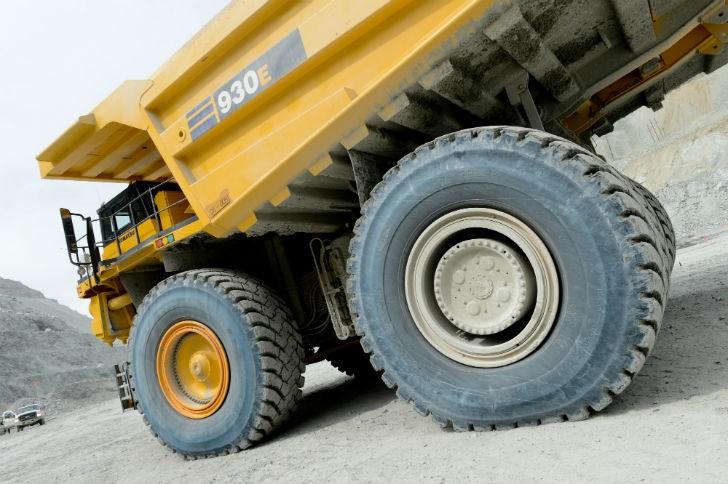Natural selection Choosing the right tire is critical to successful haul truck operation

Heavy haul trucks travel across extremely challenging surfaces while carrying enormous loads. As a result, the tires on these vehicles can be exposed to tremendous forces. That’s why it’s critical for fleet and maintenance managers to select the right tires for these machines.
“There are numerous factors that should be considered when selecting tires for your haul trucks,” said Eric Matson, manager, global field solutions, OTR, The Goodyear Tire & Rubber Company. “Before you select a specific tire, you should have a thorough understanding of your haul truck’s on-site activities.”
This can be accomplished by mounting a location tracking unit on a truck and letting the vehicle run for a designated period of time. (Goodyear recommends 24 to 48 hours.) This will help you develop a “site map”.
“At the same time, you should track the distance the truck travels, its speed and the load it is carrying,” said Matson. Many trucks are already equipped with devices that log speed and load data, he noted.
“Then you should take the average load and multiply that number by the average speed. This will give you the site’s ton-miles-per-hour (TMPH) or ton-kilometres-perhour (TKPH) rating.”
Each mining tire, regardless of application, also has a specific TMPH rating, “Which indicates the maximum amount the tire should carry at a certain speed, and is calculated the same way as a mine site’s TMPH rating,” said Matson.
“In every case, you want to pick a tire whose TMPH rating is higher than the site’s TMPH rating. This will help ensure that you’ve selected the right tire for the site.”
Tread design
Matson also advises that you pay particular attention to the tire’s tread design.
“You might be presented with several tread design options that, on the surface, seem equally viable,” said Matson. “However, it’s what’s beneath your tire – the underfoot condition – that will determine what tread design you ultimately should use.”
Is the underfoot condition soft? If so, a tire with a shallower tread depth might be more appropriate. Is the underfoot condition rocky? In that case, you might want to use a tire that has a deeper tread depth, for enhanced traction.
“If in doubt, contact your Goodyear representative, who can help you evaluate your site’s underfoot condition and make an expert tire recommendation,” said Matson.
While evaluating underfoot conditions, look for other potential problem areas, including the roads that lead into and out of the site. Are these areas free of rocks and other debris that can cut into tires? How are they manicured? Are there things that can be done, such as laying down gravel, to help improve tire traction? How many curves are your trucks required to navigate? How steep are the surface inclines and declines?
“Hard turns can be hard on tires,” noted Matson. Goodyear recommends keeping grades to eight degrees or less, whether up or down.
Finally, benefits gained through careful tire selection can be negated by poor tire maintenance. Because tires are “mission-critical” items – and because they can represent a substantial investment – it pays to do everything within your power to optimize their performance and longevity.
“Maintaining proper inflation levels is the single-most effective thing you can do to achieve optimal tire performance and longer service life,” said Matson. “Consistent, correct inflation positively impacts tire wear and casing life and also can help reduce the amount of fuel that your trucks use.”
Inflation checks should be part of every pre-shift truck inspection. “If that isn’t feasible, check your tires’ inflation pressure at least once a day.”
Beware of both over-inflation and under-inflation. Over-inflation can lead to uneven wear and make tires susceptible to ruptures when rolling across tough terrain. Under-inflation causes tires to flex more.
“And make sure you don’t overload your tires, said Matson. “Under-inflation and over-loading can damage tires.
“Tires are designed to keep your haul trucks moving,” he added. “Make sure that you and your team use the right tires. And make sure you vigilantly maintain these tires so your trucks stay up and running.”
Company info
200 Innovation Way
Akron, OH
US, 44316-0001
Website:
goodyeartrucktires.com
Phone number:
330-796-2121


